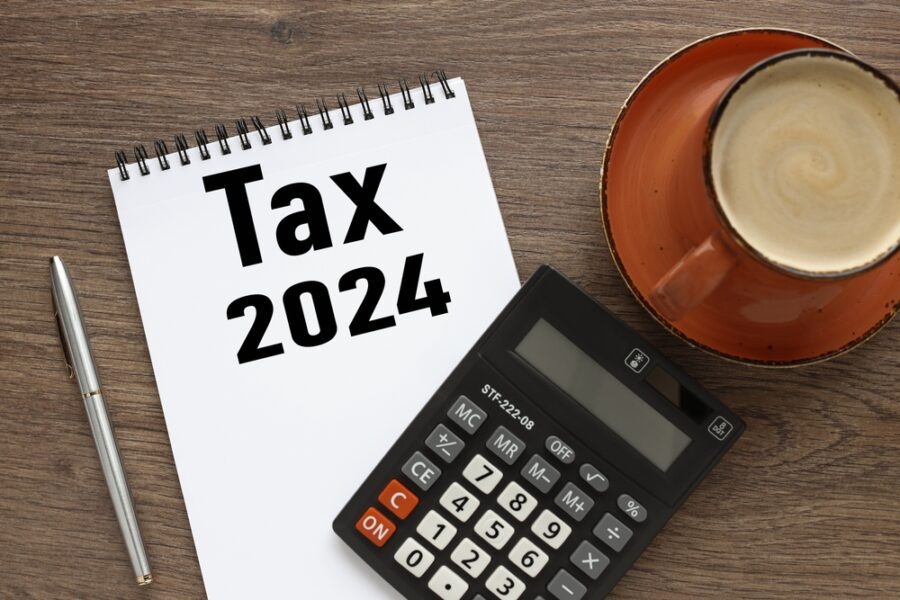As you transition into retirement, understanding how your income will be taxed is crucial for sound financial planning. Tax laws can significantly influence your overall financial strategy, so retirees need to be well-informed about the different types of retirement income and their tax implications. Let’s examine how taxes generally apply to common retirement income sources to help you plan effectively.

Understanding taxable income for retirees
As you transition into retirement, a solid grasp of how your income will be taxed is vital for sound financial planning. The tax treatment of retirement income can vary depending on the source, which can significantly influence your overall tax bill. Let’s examine how taxes generally apply to common retirement income sources.
Social Security benefits might be partially taxable, depending on your total income. If your combined income—that’s your adjusted gross income plus any nontaxable interest, plus half of your Social Security benefits—falls within certain income ranges, you could end up paying taxes on up to 85% of your benefits.
Most pension income is taxed as ordinary income. That said, if you contributed after-tax dollars to your pension, a portion of your payments could be tax-free. This is a key point to consider when you’re wondering, “Is pension taxable income?”
Distributions from traditional IRAs and 401(k)s are usually taxed as ordinary income. This is because your contributions were made before taxes, allowing you to defer paying taxes until you withdraw the money. On the other hand, if you take qualified distributions from a Roth account, those are tax-free because you already paid taxes on the contributions.
Income generated from investments held in taxable accounts is subject to different tax rates. Interest income is generally taxed as ordinary income. Qualified dividends, however, are taxed at lower long-term capital gains rates. When you sell investments, any capital gains are taxed at either short-term or long-term rates, depending on how long you owned the asset.
To improve your tax situation during retirement, think about diversifying your retirement savings between traditional and Roth accounts. This gives you more flexibility in managing your taxable income. You might also consider converting funds from traditional accounts to Roth accounts during years when your income is lower; this can reduce the amount of required minimum distributions (RMDs) you’ll need to take later. Withdrawing funds strategically from different types of accounts can help you manage your tax bracket, and using tax-efficient investment strategies within your taxable accounts can further reduce your tax burden.
Ultimately, understanding the tax consequences of various income sources can help you make well-informed financial decisions and potentially lower your overall tax liability during retirement. It’s always a good idea to seek personalized advice from a tax professional or financial advisor who can assess your specific situation.
Now that you know the basics of taxable retirement income, let’s dive into calculating those taxes accurately.
Calculating taxes on retirement income
Knowing how to calculate taxes on retirement income is crucial for effective financial planning as you get older. A common question among retirees is, “Do I have to pay taxes on retirement income?” The answer is often yes, but the specifics depend on where your income comes from and how much you have.
Typical sources of taxable retirement income include Social Security benefits (where up to 85% might be taxable), withdrawals from traditional IRAs and 401(k)s, pension payments, and investment income like dividends, capital gains, and interest. Each of these income sources can be taxed differently, so it’s important to understand how they all add up in your overall tax picture.
Retirees are subject to the same federal income tax brackets as everyone else. As of 2024, there are seven tax brackets, ranging from 10% to 37%. The rate you pay depends on your income level and filing status. It’s essential to know which bracket you’re in because that determines your marginal tax rate—the rate you’ll pay on each additional dollar of income.
To manage your retirement tax rates effectively, think about diversifying your retirement accounts between traditional and Roth options. This can give you more control over your taxable income. Consider Roth conversions during lower-income years, and strategically plan withdrawals from different account types to stay in a favorable tax bracket. Also, use tax-efficient investment strategies within your taxable accounts.
Besides federal taxes, don’t forget to consider state taxes. Some states offer tax breaks on retirement income, while others tax most sources of retirement income. Seven states—Alaska, Florida, Nevada, South Dakota, Tennessee, Texas, and Wyoming—don’t have any income tax at all. If you’re thinking about moving during retirement, the state tax situation could be a major factor in your decision.
Keep in mind Required Minimum Distributions (RMDs), which are mandatory withdrawals from certain retirement accounts that you must start taking at age 73 (as of 2023). Failing to take RMDs can lead to hefty penalties, so it’s crucial to include them in your tax planning.
Understanding how to calculate taxes on your retirement income and putting tax-efficient strategies in place can help you get the most out of your income and potentially extend how long your savings last. Retirement taxation can be complicated, so while this overview gives you a general idea, consider getting personalized advice from a tax professional or financial advisor to help you navigate the complexities and optimize your retirement tax strategy.
Now that we’ve covered the general taxation of retirement income, let’s zero in on pension plans and their specific tax rules.
Is pension plan taxable – Understanding pension taxation
Many retirees ask, “Is pension plan taxable?” Generally, yes, most pension income is taxable. However, the specifics of pension taxation can depend on various factors. Let’s explore the key aspects to help you better understand how your retirement income might be taxed.
Generally, pension income is taxed as ordinary income, using your regular income tax rate. This means that when you receive pension payments, you’ll need to include them on your tax return and pay taxes accordingly. However, keep in mind that if you made after-tax contributions to your pension plan, a portion of your payments might be tax-free. Also, some states offer tax breaks on pension income, which can affect your overall tax liability.
When figuring out how much are pensions taxed, several factors come into play. The type of contributions you made—pre-tax or after-tax—will affect the taxability of your pension payments. Your total income, including your pension and any other income sources, will determine your overall tax bracket and the rate at which your pension is taxed. State taxes also matter, since the taxation of pensions varies from state to state. Some states don’t tax pension income at all, while others offer partial exemptions or tax it fully.
If you’re concerned about paying taxes on pension income, here are a few strategies to consider: diversify your retirement income sources to include both taxable and tax-free options, such as Roth IRAs; take larger pension distributions during years when your other income is lower, which might help you stay in a lower tax bracket; and check whether your state offers any tax breaks for pension income, and consider this when deciding where to retire.
When it’s time to file your taxes, you’ll need to report your pension income on your federal tax return. You’ll receive a Form 1099-R from your pension provider that details your pension payments for the year. Report the taxable portion of your pension on Form 1040 as part of your total income. If taxes were withheld from your pension payments, those withholdings will be credited against your total tax liability.
Understanding how pensions are taxed is essential for sound retirement planning. By learning the rules and potential strategies, you can better manage your tax liability and maximize your retirement income. Be sure to get personalized advice from a qualified tax professional about your specific situation, since pension taxation can be complex and individual circumstances vary widely.
Now that you understand pension taxation, let’s move on to another critical component of retirement savings: 401(k)s and other retirement accounts.

401k and retirement account tax considerations
Understanding the tax implications of your 401k and other retirement accounts is crucial for smart retirement planning. When you take money out of a traditional 401k during retirement, those distributions are generally taxed as ordinary income. This means the amount you withdraw gets added to your other income for the year and is taxed at your marginal tax rate, which could be as high as 37% for high earners. State taxes could also apply, depending on where you live.
It’s important to be aware of Required Minimum Distributions (RMDs). As of 2023, once you reach age 73, you generally must start taking RMDs from your 401k. These RMDs are also taxed as ordinary income and could potentially push you into a higher tax bracket.
Many retirees wonder, “Do you pay taxes on 401 k when you retire?” In most cases, yes, you’ll pay taxes when you withdraw money from a traditional 401k in retirement. However, there are exceptions. Roth 401k contributions and earnings can be withdrawn tax-free if certain conditions are met. Also, if you made after-tax contributions to a traditional 401k, a portion of your withdrawals might be tax-free.
To help keep your tax burden as low as possible, here are a few strategies to consider: spread out your withdrawals to try to stay in lower tax brackets, think about doing Roth conversions during years when your income is lower, use tax-efficient withdrawal strategies across all your retirement accounts, and if you’re 70½ or older, consider using qualified charitable distributions (QCDs).
How your 401k is taxed after retirement depends on several factors. Traditional 401k withdrawals are generally taxed as ordinary income, while Roth 401k withdrawals are typically tax-free if you’re at least 59½ and have held the account for at least 5 years. Keep in mind that if you take early withdrawals before age 59½, you might have to pay a 10% penalty in addition to the regular income taxes.
Understanding these tax issues can help you make smart choices about your 401k and other retirement accounts, potentially increasing your after-tax income in retirement. As always, it’s a good idea to talk with a financial advisor or tax professional for personalized advice that’s tailored to your specific situation.
Now, let’s build on that and explore some tax-efficient strategies you can use when making those crucial retirement withdrawals.
Tax-efficient retirement withdrawal strategies
Creating tax-efficient retirement withdrawal strategies is essential for getting the most out of your retirement savings and keeping your tax bill as low as possible. By carefully planning how and when you withdraw funds from different retirement accounts, you can potentially lower your overall tax liability and make your savings last longer.
One key part of retirement tax strategies is having a mix of different account types, including traditional IRAs and 401(k)s (which are tax-deferred), Roth IRAs and Roth 401(k)s (where withdrawals are tax-free), and taxable brokerage accounts. This mix gives you more flexibility in managing your tax situation during retirement.
One common way to reduce taxes in retirement is to withdraw from accounts in a specific order. Start with required minimum distributions (RMDs) from tax-deferred accounts if you’re 73 or older, then use funds from your taxable accounts, followed by tax-deferred accounts like traditional IRAs and 401(k)s. Save your Roth accounts for last, allowing them to continue growing tax-free for as long as possible.
Another tax-efficient strategy involves taking a proportional amount from different account types each year. This can help smooth out your tax liability over time and potentially keep you in a lower tax bracket.
Consider converting some of your traditional IRA or 401(k) funds to Roth accounts during years when your income is lower. While you’ll pay taxes on the amount you convert, this strategy can reduce your future RMDs and give you tax-free withdrawals later on.
For your taxable accounts, consider using a strategy called tax-loss harvesting, which can help offset capital gains and lower your overall tax burden. This involves selling investments at a loss to offset gains you’ve realized from selling other investments.
If you’re 70½ or older, you can make Qualified Charitable Distributions directly from your IRA to eligible charities. QCDs can satisfy your RMD requirements without increasing your taxable income.
Think carefully about when you start claiming Social Security benefits and how you combine them with your other income sources. With proper planning, you can potentially reduce the amount of your benefits that are subject to taxation.
Putting these tax strategies into action requires careful planning and a good understanding of your unique financial situation. Working with a qualified financial advisor or tax professional can help you create a personalized approach to minimize taxes and get the most out of your retirement savings.
Finally, let’s examine the current trends shaping retirement tax planning to keep you ahead of the curve.
Current trends in retirement tax planning
As retirees navigate the complex world of taxes in their later years, several key trends have emerged in retirement tax planning. Understanding these trends can help you make informed decisions about your retirement strategy and potentially improve your tax situation.
Roth conversions are becoming increasingly popular among retirees. Many people are strategically converting assets from traditional IRAs and 401(k)s to Roth accounts. This means paying taxes on the converted amount now, potentially at a lower rate, in exchange for tax-free withdrawals in the future. With concerns about potential future tax increases, Roth conversions offer a way to diversify how your retirement tax planning are taxed.
There’s a growing emphasis on managing your tax bracket. Retirees are getting smarter about managing their tax bracket during retirement. By carefully planning when they take withdrawals from different account types and income sources, they aim to stay within lower tax brackets. This might mean taking larger distributions in years when their income is lower or strategically harvesting capital gains.
Using Qualified Charitable Distributions (QCDs) has become more common. For those aged 70½ or older, QCDs allow direct transfers from IRAs to qualified charities, which can satisfy required minimum distributions without increasing taxable income. This strategy has become a popular way to support charitable causes while also managing tax liability.
Health Savings Accounts (HSAs) are increasingly seen as useful retirement and tax planning tools. Their triple tax benefits—tax-deductible contributions, tax-free growth, and tax-free withdrawals for qualified medical expenses—make them attractive for long-term savings.
State tax considerations are playing a bigger role in decisions about where to live. With remote work becoming more common, retirees are paying more attention to state tax implications when choosing where to live. Some are moving to states with no income tax or those that offer favorable tax treatment of retirement income.
There’s an increased focus on tax-efficient withdrawal strategies. Retirees are using more sophisticated withdrawal strategies that take into account the tax implications of different account types. This might involve taking proportional withdrawals from taxable, tax-deferred, and tax-free accounts to maximize overall tax efficiency.
Many retirees are planning for potential changes in tax laws. With the possibility of future tax increases, proactive planning is becoming more common. This includes accelerating income in lower-tax years and exploring strategies to lock in current tax rates on retirement savings.
As the retirement landscape changes, staying informed about these trends in retirement tax planning can help you increase your after-tax income and protect your hard-earned savings. Consider talking with a financial advisor to see how these trends might affect your specific situation.
Planning ahead
Navigating retirement taxes requires a multifaceted approach, considering income sources, strategic withdrawals, and evolving tax laws. Instead of seeing taxes as a fixed burden, view them as a manageable aspect of your financial strategy, working closely with financial professionals. Staying informed and adapting your plans will help you optimize your after-tax income, ensuring a financially secure and comfortable retirement.
Read More
Retirement Plans Are Changing in 2025! – Retired in USA
The ONLY Unexpected Tax Change Seniors Will Face in 2025
6 Brilliant Ways To Reduce Your Taxes in Retirement








